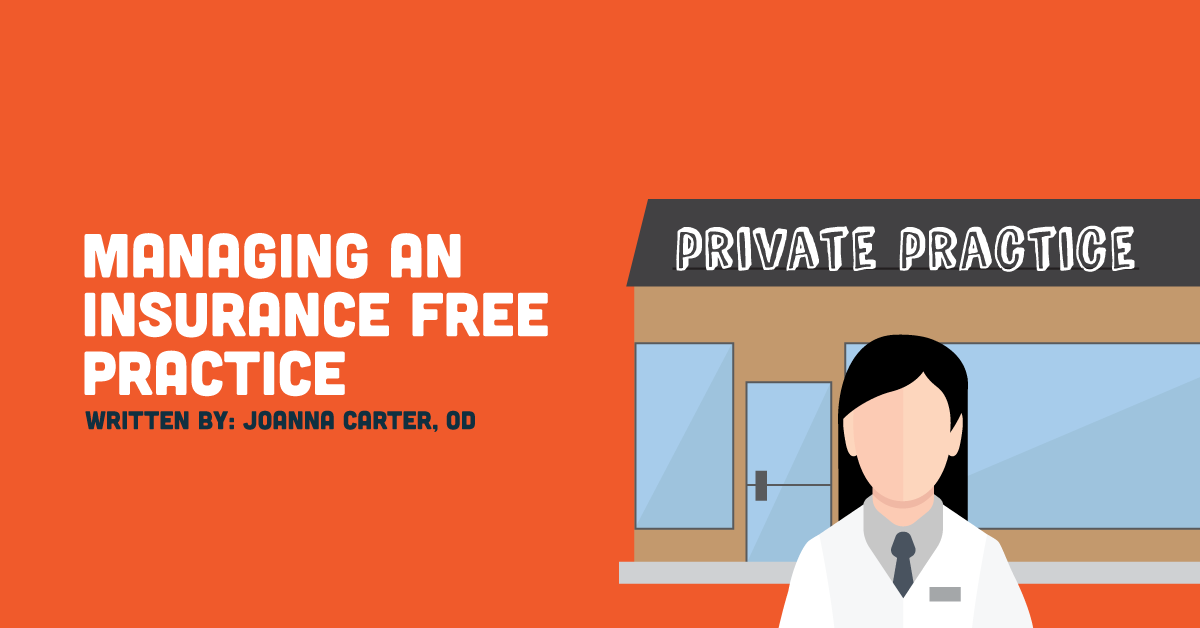Four months before opening the doors of my own practice, I went to a local OD/OMD gathering. A group of optometrists were bemoaning insurance reimbursements when I approached them. I chimed in, “In my perfect world, I would be in a practice that doesn’t take insurance.” Everyone laughed.
Little did they know, that was my plan: to open an office that’s out of network with all insurance plans.
I chose this option after speaking with many other specialty-care providers. A local naturopath actually high-fived me when I told him my plan. He said, “It’s great! I started out taking insurance, and since I dropped them I’ll never go back.” My rationale for this decision is echoed by Dr. Miki Lynn D’Angelo in her article for NGO on why she doesn’t accept all insurance plans.
After a year in business, my office is Insurance-Free. It’s like caffeine-free, where there’s still a little bit in there, but it’s not the main ingredient. This is how we do it!
No surprises
Nobody likes financial surprises, so we are up-front with our patients when they call to schedule an appointment. We let them know that we are out of network with all insurance plans, so payment in full is required on the appointment date. We also let them know that certain insurance plans (particularly, Medicare and Medicaid) do not allow for out-of-network billing, and we have them sign an ABN form on arrival.
Informative website
Our website has a Scheduling page, which also lists our out-of-network status. We also have an updated list of common billing codes and fees, so patients can call their insurance to ask about OON benefits.
Office Ally
Within a few months of opening, I learned how easy (and free!) it is to submit claims from our practice management system (Crystal PM) and Office Ally. I also learned that although I checked the “not accepting assignment” box, the insurance companies insisted on sending checks to me anyway. If we do receive reimbursement from the insurance, we either refund the patient or leave it as a credit on their account for pre-scheduled follow-ups or vision therapy.
Careful coordination
So far, we have had no problem submitting claims for medical exams without preauthorization. However, for vision therapy we always double-check coverage before submitting claims. If VT is listed as an exclusion on the policy (which often is the case), we will not bill the insurance. This minimizes improperly-paid claims, charge-backs and other financial surprises (see #1).
I still debate whether to take some insurance plans. I consider taking Medicare for our neuro-rehabilitation patients. I consider taking Medicaid because so many Medicaid patients would benefit from vision therapy. But at the end of the day, I love being insurance-free!
